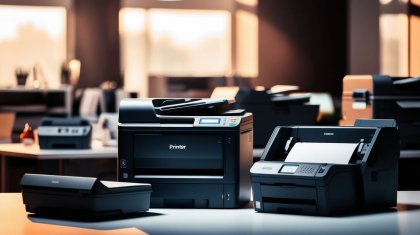In the present fast-paced online age, technology is constantly changing. Companies regularly upgrade their IT infrastructure hardware, including servers, computers, and network components, to remain competitive. What happens, though, when these systems become outdated or fail? Effective IT hardware disposal and recycling are crucial, not only to ensure operational effectiveness but also to protect the planet and sensitive information.
This manual is designed to provide business managers and owners with an in-depth understanding of the complexities involved in IT asset disposal, emphasizing sound strategies for responsible IT hardware disposal to promote environmental sustainability and data protection. Let us discuss the accountable disposal of enterprise devices, including servers and other electronic equipment.
Why Responsible IT Hardware Disposal Matters
Before going through the hardware disposal checklist and steps, it is essential to learn why proper IT equipment disposal is necessary:
Environmental Impact: Properly disposing of electronic hardware, also known as electronic waste, is a significant source of environmental pollution. Proper disposal reduces toxic waste and encourages recycling.
Data Security: Most IT components contain sensitive information that, if not handled properly, can lead to data breaches.
Regulatory Compliance: R2, e-Stewards, and local standards, such as Miami-Dade County's electronics recycling requirements, mandate that IT equipment be appropriately disposed of.
Brand Reputation: Showing responsible disposal of tech strengthens corporate social responsibility.
The Process of IT Asset Disposal: Major Steps
The IT asset disposition (ITAD) process entails responsibly and securely disposing of old or unwanted computer hardware and other electronic equipment. The following are the key steps:
1. Asset Inventory and Evaluation
Identify assets for disposal: Consider all assets, including business IT equipment and IT components.
Assess condition: Identify which assets can be salvaged, reused, or disposed of.
Develop an equipment disposal checklist to record serial numbers, asset tags, and the condition of each item.
2. Data Sanitization and Security
Data destruction: Before physical disposal, data should be securely wiped or destroyed to avoid breaches.
IT asset removal: Utilize certified data sanitization procedures.
3. Hardware Decomposition and Recycling
Hardware decomposition: Break down hardware for recycling or reutilization, removing hazardous components.
Responsible recycling: Collaborate with ITAD firms that specialize in ITAD recycling, such as Iron Mountain ITAD, to ensure compliant and environmentally responsible electronics recycling.
4. Final Disposition and Documentation
Select asset disposal procedures: options include donating, reselling, recycling, or disposing of assets through destruction.
Document the process: Keep track for compliance and audit reasons.
Hardware Disposal Checklist: Ensuring a Smooth and Compliant Process
An extensive hardware disposal checklist simplifies the IT equipment disposal process:
- List all assets to be disposed of, including IT hardware, components, and peripherals.
- Ensure data security by scheduling data sanitization processes.
- Erase all sensitive information from drives and storage media.
- Assess the state of assets for resale or reuse.
Select and implement proper asset disposal procedures based on the asset's condition and regulatory compliance requirements.
- Break down hardware for recycling, with an emphasis on hardware decomposition where necessary.
- Collaborate with third-party, certified ITAD companies for the recycling of electronics.
- Properly document and report the disposal process.
- Comply with local regulations, including those of Miami-Dade County, regarding electronics recycling requirements.
- Plan how to recycle or dispose of hazardous materials such as circuit boards and batteries.
IT Asset Disposition (ITAD) Companies and Services
Collaborating with established ITAD companies is crucial for a successful IT asset disposal process. These companies, such as Iron Mountain ITAD, provide full-service ITAD solutions that involve:
- Sanitization of data by certified means.
- Responsible electronics recycling with protection for the environment.
- Resale and remarketing of assets.
- Certification and documentation for compliance.
ITAD recycling not only ensures that IT hardware is disposed of responsibly but also optimizes asset value while minimizing its environmental impact.
How to Dispose of Enterprise Equipment Such as Servers
The disposal of enterprise IT solutions, particularly servers, must be carefully planned:
Secure Data Sanitization: Erase data securely using certified tools and software.
Disassembly and Hardware Decomposition: Decompose servers appropriately for recycling.
Partner with ITAD services: Partner with IT asset disposition firms dealing in enterprise IT solutions.
Follow the disposal of IT assets procedures: Stick to equipment disposal procedures as required by regulations.
Follow these steps, and companies can remain compliant and keep sensitive data secure during disposal.
IT Disposal Challenges and How to Beat Them
IT hardware disposal is not without its challenges:
1. Data Security Dangers
Solution: Use certified data sanitization methods and maintain detailed documentation.
2. Environmental Mandates
Solution: Collaborate with ITAD recycling vendors who are familiar with local regulations, such as Miami-Dade County's guidelines for electronics recycling.
3. Cost Control
Solution: Choose resale or donation programs where feasible to cover the cost of disposal.
4. Hardware Decomposition Complexity
Solution: Utilize professional services with expertise in hardware decommissioning and IT asset removal.
Best Practices for Responsible IT Hardware Recycling
To guarantee compliant electronics recycling and environmentally sound disposal:
- Collaborate with ITAD firms dedicated to environmentally friendly practices.
- Keep extensive documentation of the IT asset disposal process.
- Employ certified decomposition methods for IT hardware.
- Train employees on the importance of disposing of hardware safely for IT personnel.
- Update disposal methods regularly to comply with changing regulations.
Frequently Asked Questions
Q: How to Dispose of Computer Hardware Correctly?
A: Correct disposal includes itemizing assets, securely erasing data, disassembling hardware, and collaborating with qualified ITAD companies for recycling or proper disposal.
Q: How to dispose of computer hardware safely?
A: Guarantee data security through certified sanitization, break down hardware for recycling, and adhere to local electronics recycling legislation, such as Miami-Dade County electronics recycling.
Q: How do you dispose of IT assets?
A: Adhere to a formal IT asset disposal process consisting of assessment, data sanitization, disassembly, recycling, and documentation.
Q: What can responsible tech disposal encompass?
A: Responsible disposal encompasses data destruction, environmentally friendly recycling, donation, resale, or secure destruction, all by IT asset disposition standards.
Q: What are three typical IT disposal challenges?
A: Data security threats, environmental regulation, and hardware decomposition issues.
Q: What does the IT equipment recycling process entail?
A: It includes assessment, data sanitization, disassembly, environmentally sound recycling, and Specialized ITAD services typically perform documentation.
Final Thoughts: Adopting Responsible IT Hardware Disposal
The value of proper IT hardware disposal cannot be overemphasized. Adequate management of IT equipment, particularly in enterprise IT solutions, assures data protection, environmental responsibility, and compliance with regulations. Through a well-defined hardware disposal checklist, collaborative work with reputable ITAD vendors, and strict adherence to best practices, your business can transform what could otherwise be a disposal dilemma into a platform for responsible stewardship and ecological responsibility.
Remember, responsible technology disposal isn't about compliance—it's about safeguarding your business, your customers, and our future for generations to come.








